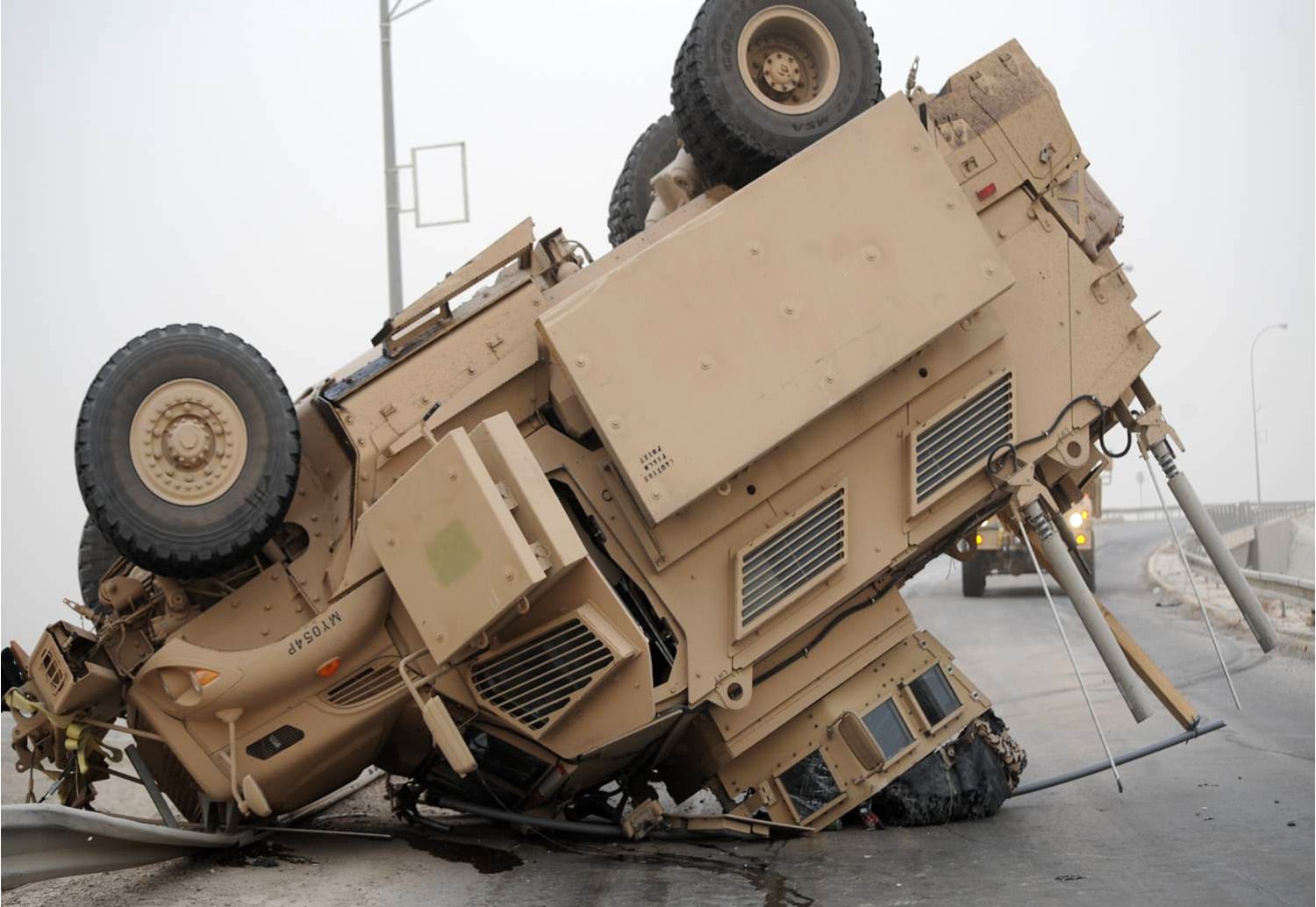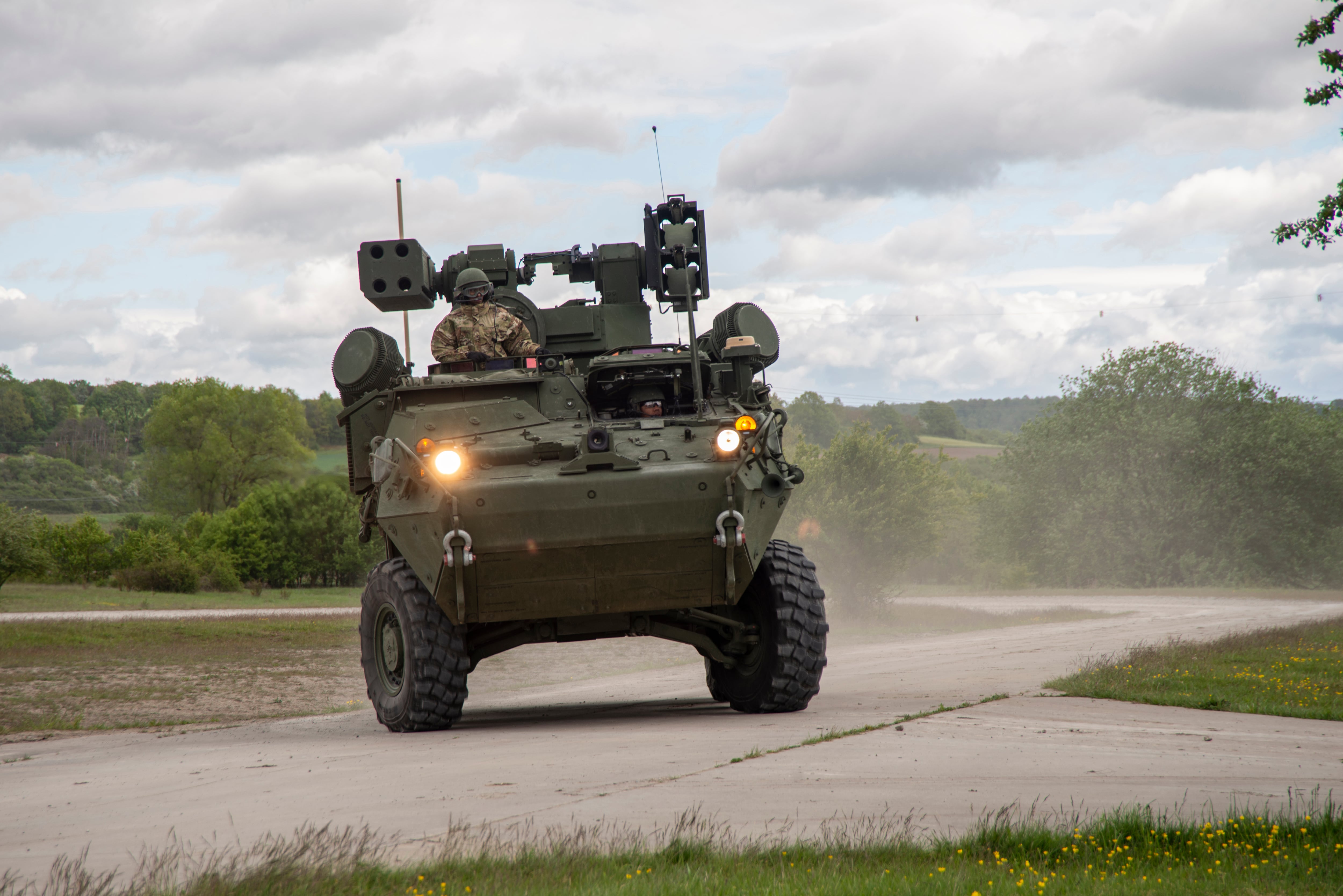FORT RUCKER, Ala. — After a scathing government watchdog probe into tactical vehicle rollovers, Army leaders are working to overhaul the service’s driver training program, according to the Army’s top safety official. Any changes should roll out in about a year, he told Army Times.
The Government Accountability Office report “really resonated with both the Army and the Marine Corps...it told us what we needed to hear,” said Brig. Gen. Andrew Hilmes in a Monday afternoon interview.
Hilmes commands the Army Combat Readiness Center, which oversees service-wide safety efforts and investigations. He also serves as the service’s top safety officer advising the chief of staff.
RELATED

One of the GAO’s findings faulted the Army’s decentralized driver training model, saying that local master drivers and company-level license instructors and examiners were not able to consistently implement the training program, which was “vulnerable to competing” with other priorities and frequently condensed.
Those problems were due in part to a lack of “performance criteria and measurable standards” for licensing and training beyond an initial road test designed to certify daytime driving on flat terrain.
In response, Hilmes revealed, a Pentagon planning group has been working to completely overhaul the way the Army trains its drivers. Previously, the service’s only publicly acknowledged change to driver training was to improve program oversight by establishing a centralized course for master drivers and delineating roles and responsibilities for troops involved in executing the training.
“I think you’ll see something in the next year,” said Hilmes, who added that the working group has been developing the new program since last summer.
The reasons for the update go beyond the GAO report, too, explained Hilmes.
“When it comes to driving...tactical vehicles, the goalposts are kind of moving on us a little bit,” the general said. “Right now, one in five soldiers entering the Army doesn’t have a civilian driver’s license...20 years ago, it was 10%.”
What changes may be coming?
Hilmes said the core of the upcoming driver training changes will be “clearly delineated” tasks, conditions and standards that drivers must complete for each vehicle they operate.
There will likely be different sets of standards for different driving environments, too, he said. That will be a major shift in philosophy. The current program certifies troops to simply drive during the day on flat surfaces, and other skills, like nighttime driving, are left to individual units.
“It’s going to be a lot more prescriptive,” Hilmes explained. The forthcoming program will likely include a structured progression model for ground drivers that mirrors those that develop aviators.
Hilmes hinted that the service is leaning towards creating proficiency levels for drivers that would signify a soldier’s experience with a specific vehicle. When someone passes the initial road test for a vehicle, they are a “basic driver” under this concept.
“I think where they’re going is after you accumulate so many hours accident-free, maybe now you are considered an intermediate driver,” he said, suggesting that certain missions may require vehicle drivers to have a certain level of certification. “I think that’s the direction where we’re headed.”
The updates to the program will likely include more defined training scenarios for each vehicle, Hilmes added, though those details won’t be available until the new program is unveiled.
The general also believes that the shift will force units to better track how experienced their drivers are, which will help commanders better pair experienced drivers with inexperienced ones to mitigate risks during training.
“We stink at logging miles for drivers,” Hilmes said. Many accident investigations find that units haven’t properly tracked mileage for their drivers following their initial road tests.
Hilmes also hopes that the updated standards, whatever their final form may be, will force units to be more intentional about how they conduct training.
“We haven’t investigated a tactical vehicle accident [since 2019]...where [the unit] had a to-standard driver’s training program. It is a problem,” he said. “It’s not sexy. But, man, it’s foundational.”
Army master drivers echoed that sentiment in the GAO report, with one telling investigators that “driver’s training is not a high priority for the units, and it’s never an issue until it becomes an issue.”
Davis Winkie covers the Army for Military Times. He studied history at Vanderbilt and UNC-Chapel Hill, and served five years in the Army Guard. His investigations earned the Society of Professional Journalists' 2023 Sunshine Award and consecutive Military Reporters and Editors honors, among others. Davis was also a 2022 Livingston Awards finalist.




